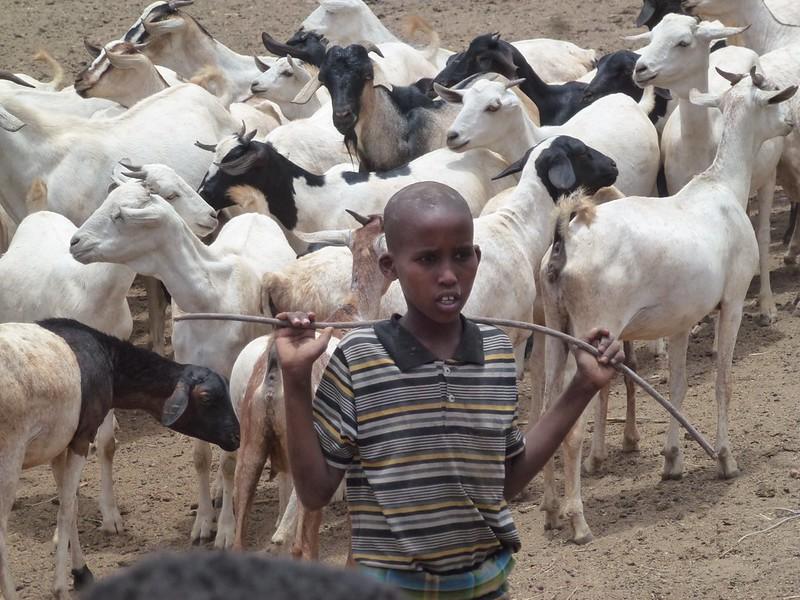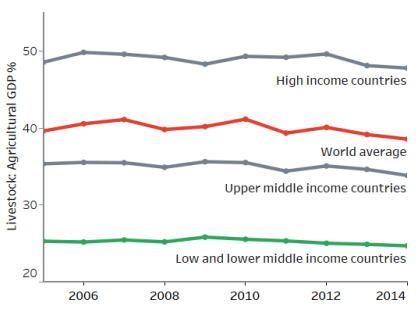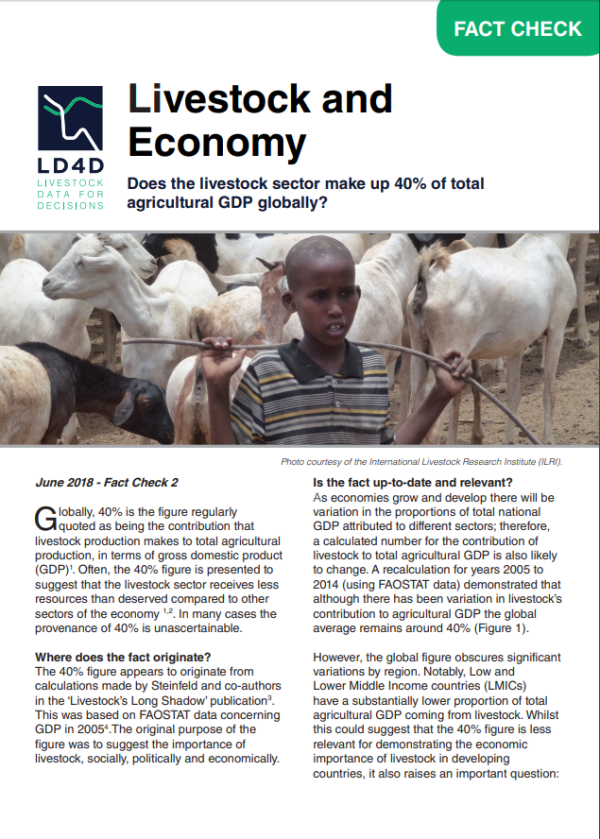Fact Check 2: Livestock and Economy

Citation
Does the livestock sector make up 40% of total agricultural GDP globally?
Globally, 40% is the figure regularly quoted as being the contribution that livestock production makes to total agricultural production, in terms of gross domestic product (GDP)1. Often, the 40% figure is presented to suggest that the livestock sector receives less resources than deserved compared to other sectors of the economy1,2. In many cases the provenance of 40% is unascertainable.
Where does the fact originate?
The 40% figure appears to originate from calculations made by Steinfeld and co-authors in the ‘Livestock’s Long Shadow’ publication3. This was based on FAOSTAT data concerning GDP in 20054.The original purpose of the figure was to suggest the importance of livestock, socially, politically and economically.
Is the fact up-to-date and relevant?
As economies grow and develop there will be variation in the proportions of total national GDP attributed to different sectors; therefore, a calculated number for the contribution of livestock to total agricultural GDP is also likely to change. A recalculation for years 2005 to 2014 (using FAOSTAT data) demonstrated that although there has been variation in livestock’s contribution to agricultural GDP the global average remains around 40% (Figure 1).
However, the global figure obscures significant variations by region. Notably, Low and Lower Middle Income countries (LMICs) have a substantially lower proportion of total agricultural GDP coming from livestock. Whilst this could suggest that the 40% figure is less relevant for demonstrating the economic importance of livestock in developing countries, it also raises an important question:
Is GDP an effective and fair measure of the value of livestock in LMICs,
where animals have multiple functions (e.g. food production, income generation, manure for fertilising crops, draught power and a savings/insurance resource)? These values are unlikely to be captured in GDP accounting methods6. Efforts to quantify such varying livestock values have been demonstrated, for instance in Ethiopia the value of livestock increased by more than 100% when multiple functions (e.g. draught power, dung for fuel) were considered7,8. The value of livestock would likely increase further if ceremonial and status roles of livestock could be effectively quantified9.
Are there observable trends?
Due to variation in both annual data and methods, the contribution of the livestock sector to total agricultural GDP is likely to differ with every calculation. For the years covered and regions defined, the recalculations demonstrated here do not suggest any noticeable trends. However, it is important to recognise the regional variation in the largely globally reported figure, and that in many circumstances GDP may not be an effective indicator of the true value of livestock.

Figure 1.
The livestock sector’s contribution to agricultural gross domestic product (GDP); shown for high income countries, upper middle income countries, low and lower middle income countries, and a world average. Calculations were based on FAOSTAT production values, with countries grouped into World Bank 20175 income groups.
References
- The World Bank. 2009. Minding the Stock: Bringing Public Policy to Bear on Livestock Sector Development. The International Bank for Reconstruction and Development/ The World Bank, Washington, D.C.
- FAO. 2012a. Livestock and Landscapes. Food and Agriculture Organization of the United Nations, Rome, Italy.
- Steinfeld, H. Gerber, P.J., Wassenaar, T., Castel, V., Rosales, M., & De Haan, C. 2006. Livestock's Long Shadow: Environmental Issues and options. Food and Agriculture Organization of the United Nations, Rome.
- FAOSTAT. 2017 FAOSTAT: Food and Agriculture Data. FAO.
- FAO. 2012b. Livestock sector development for poverty reduction: an economic and policy perspective - Livestock’s many virtues, by Otte, J., Costales, A., Dijkman, J., Pica-Ciamarra, U., Robinson, T., Ahuja, V., Ly C., and Roland-Holst, D., Rome.
- Behnke, R. 2010, The contribution of livestock to the economies of IGAD member states. Odessa Centre, Greatg Wolford, UK.
- IGAD. 2013. The Contribution of Livestock to The Ethiopian Economy. Policy Brief Series: IGAD Center for Pastoral Areas & Livestock Development (ICPALD). ICPALD, Nairobi, Kenya.
- Herrero, M., Grace, D., Njuki, J., Johnson, N., Enahoro, D., Silvestri, S., Rufino, M. C., The roles of livestock in developing countries. Animal, 7 Suppl 1, 3-18.
Header photo: Herder boy takes goats to the communal water point of watering, Garba Tulla, Kenya. ILRI/Fiona Flintan (source)



